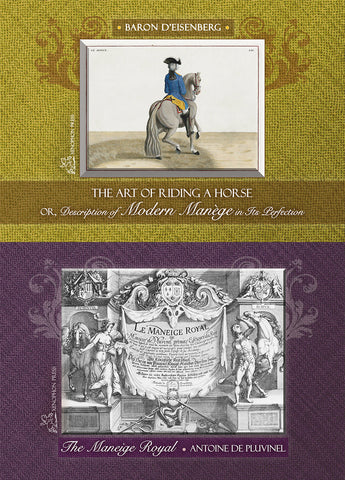Riding in Rhyme: A Humorous and Poetic Guide to the Equestrian Arts by John Anthony Davies
The verses in Riding in Rhyme were written over a period of years while John Davies was head instructor/trainer at The Grange Farm Center in London, England, and The St. James Equestrian Facility in Chicago, Illinois. The verses are intended to be humorous and easily remembered, practical lessons, written basically for children, teenagers, and young adult students. They include actual lessons in horsemanship, stable management, and certain personal experiences derived from self-participation in equestrian activities.
Serious young riders should keep this book close at hand as a simple reference while they progress in ability. The accompanying illustrations reinforce the enjoyment and encourage learning.
The humorous verses and accompanying cartoons will not only amuse and delight but also educate. Every aspect of the equestrian art from mounting to stable management is described in a very unique and simple form. Younger equestrians in particular will find the "lessons" very easy to assimilate
This books makes an ideal gift for horse lovers for Christmas, birthdays, prize giving and special occasions.
Groups and associations may wish to purchase at special bulk rates to enable selling of RIDING IN RHYME at fund raising events.
A humorous Poetic Guide to the Equestrian Arts,
Riding and rhyme it could be said
Together form a rhythmic tread
So within these pages it is my intention
To describe the equine and equitation.
Not by the usual methods you'll find
But by planting a rhythm within your mind
For rhythm is needed and never brute force
When you are learning to ride a horse.
So many people have so little time
Or cannot be bothered, so maybe a rhyme
Will help them remember or help them to know
All about horses and what makes them go
And how they regard us, so that in the end
They will know how it feels with a horse as a friend.
John Anthony Davies was born near London, England.
A total of thirteen years of military service abroad included tours of duty in Japan, Hong Kong, Middle East and Western Europe. In the last three years he was Chief Instructor of the Middle East Land Forces Military Saddle Club.
In 1959 he trained and competed with the Military Team in the Riding Clubs’ Team Event at the International Horse Show, White City, London. Following demobilization the same year, he attended the Silver Hound Riding Center in Surrey, England, and qualified for his BHS Instructors Certificate.
From 1960 through 1963 he was Chief Instructor at the South London School of Equitation, where he first began teaching blind and physically handicapped students.
In 1964 he became Chief Instructor of the famous Chigwell Center, which was the first purpose-built establishment in the world designed solely for the training of disabled riders. The center was administered by the Riding for the Disabled Trust who were founding members of the British Riding for the Disabled Association,
In 1966 he wrote The Reins of Life, the first manual ever published on teaching riding to the handicapped. The poem I Saw a Child published in the book has become internationally known and was published in translations in numerous languages. Three riding centers for the handicapped, in the United States, France and Canada, have been named after the poem.
Acknowledged as one of the foremost authorities on teaching riding as a therapeutic recreational activity for the disabled, he was adviser to the German, French, Dutch and Canadian national associations.
In 1969 John Davies became active in the early formation of the North American Riding for the Handicapped Association (NAHRA).
The Cheff Center for the Handicapped in Augusta, MI, which is the largest and most modern facility of its kind, followed his guidelines in planning their buildings and programs. He also invented and developed most of the special riding equipment now being used by centers throughout the world.
In 1973 he moved to the United States to set up programs and assist in the growth of riding for the handicapped in North America. A year later he became the director/trainer at the St. James Equestrian Farm, a one thousand acre facility near Chicago, which he developed for all equestrian disciplines.
In 1976 he was elected President of NAHRA (the national advisory and controlling body throughout the United states, with over 300 affiliated groups) for three consecutive terms. He was examiner for the NAHRA Instructor Certification program, as well as a member of the accreditation committee. As Honorary Past-President, John Davies acted as liaison between the national committees of the United States and Canada and has represented NAHRA at International Conferences on Riding for the Disabled.
Currently, John Davies continues teaching regular Pony Club clinics and is an adviser to regular and disabled riders programs, and lectures at seminars and conferences throughout the world. He trains horses and riders for hunting, combined training and dressage up to Grand Prix level
John Davies was Race Chairman of the St. James Steeplechase meet held annually near Chicago for more than a decade.






